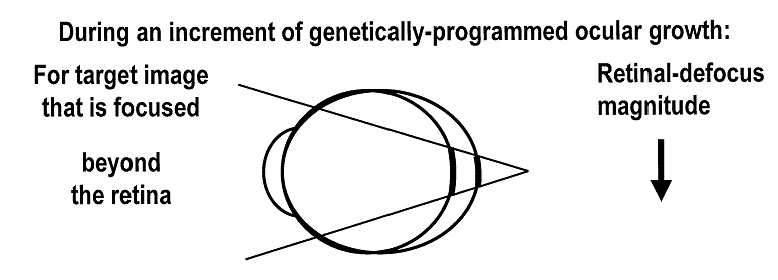

|
|
| |
Myopia occurs when light rays are focused in front of
the retina and a person is unable to see distant objects. This
condition is also known as nearsightedness. It affects 25% of the
adult population in the United States and 75% or more of the adult
population in Asian countries such as Taiwan. Our research group has
constructed a theory that explains the underlying mechanism of myopia
development. Briefly, the theory states that in addition to the
genetically-predetermined component, the rate of axial elongation is
modulated by the rate of change in retinal-defocus area (i.e., rate of
change of the size of the blur circle corresponding to a point source).
this in turn leads to a cascade of neuro-biomechanical processes,
resulting in a corresponding change in the rate of axial elongation
(Fig. 1). For example, a decrease in retinal-defocus area, as can
occur during a time increment of
genetically-preprogrammed growth, results in a decrease in the rate of
release of neuromodulators, such as dopamine, by the amacrine cells in
the retina. This in turn leads to a decrease in the rate of
proteoglycan synthesis, a precursor of the scleral matrix material.
The reduction in scleral matrix material decreases the integrity of the
scleral tunic, thus resulting in an increase in axial growth rate
relative to normal, and in turn the development of myopia (Fig. 2). It
can be shown that excessive reading results in the same process above
that leads to myopia.

Fig. 1

Fig. 2
|
|
| |
|
|
|

